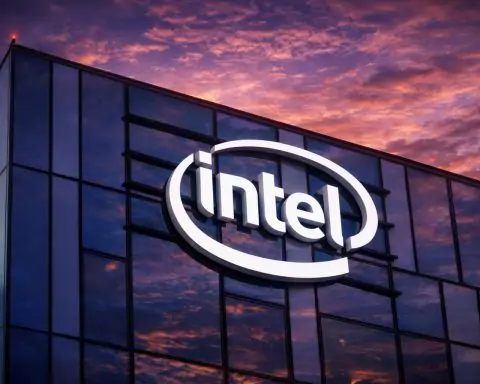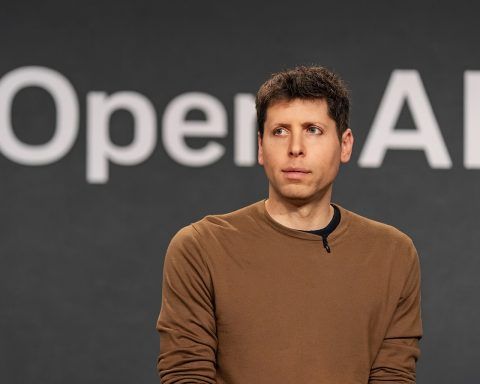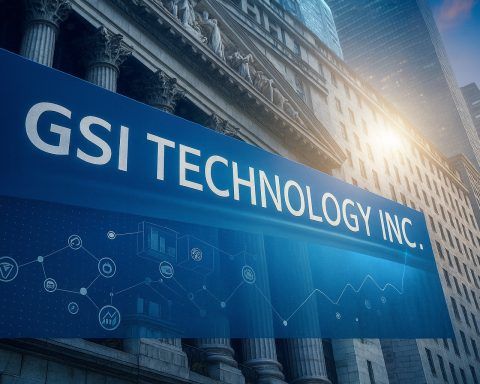- On July 17, 2025, OpenAI launched ChatGPT Agent, introducing an agent mode that can take actions such as booking reservations, shopping, or drafting documents and can connect to apps like Gmail and GitHub, with safeguards that the system will always ask for user confirmation before major actions and can be interrupted.
- Starting immediately, subscribers to ChatGPT Pro, Plus, and Team plans can activate this agent mode.
- At the AWS Summit New York on July 17, Amazon announced Bedrock AgentCore, a platform with seven core services to enable autonomous AI agents, plus an AI Agents & Tools marketplace and a $100 million fund to accelerate agentic AI development.
- Meta Platforms CEO Mark Zuckerberg formed a new unit called Superintelligence Labs and vowed to invest hundreds of billions of dollars in AI data centers, including a planned multi-gigawatt Project Prometheus in Ohio, while on July 17 Meta confirmed hiring AI researchers Mark Lee and Tom Gunter from Apple.
- France’s Mistral AI rolled out a major Le Chat update on July 17 that added a Voxtral voice mode and a Deep Research agent mode that gathers credible sources for answers.
- Citigroup and Ant Group launched a pilot of an AI-powered forex hedging tool to reduce cross-border risk costs.
- On July 17, the NSF announced MaVila, an AI manufacturing model trained on factory-specific visual and sensor data that can see and describe defects, generate step-by-step instructions, and send commands to equipment, with far less training data thanks to a tailored architecture.
- METR’s study found that an AI coding assistant slowed experienced developers by 19% in familiar codebases, contrasting with a Stanford/MIT study that reported about a 56% speedup for less experienced coders.
- Eric Schmidt predicted in an interview on July 18 that artificial superintelligence smarter than humanity could arrive within six years, calling for a national effort to keep the United States ahead and warning about natural limits such as energy and water usage in data centers.
- European Commission guidelines issued on July 18 to implement the AI Act state that the act will start applying on August 2 to major foundation models and impose fines of up to €35 million or 7% of global turnover for violations.
Major Corporate AI Announcements and Product Releases
OpenAI’s ChatGPT Agent was unveiled, introducing a personal AI assistant mode within ChatGPT. OpenAI launched ChatGPT “Agent” on July 17, adding powerful new “agentic” capabilities to its popular chatbot [1] [2]. Unlike a traditional chatbot that only generates text, the agent can take actions on behalf of users – for example, finding restaurant reservations, shopping online, or even compiling work documents [3]. Starting immediately, subscribers to ChatGPT’s Pro, Plus, and Team plans can activate this agent mode [4]. The agent operates by using a virtual computer with tools (like web browsers or code interpreters) and can even plug into apps like Gmail or GitHub to accomplish multi-step tasks [5]. “The hope is that agents are able to bring some real utility to users – to actually do things for them rather than just outputting polished text,” noted analyst Niamh Burns on the appeal of this upgrade [6]. OpenAI’s rollout includes strong safeguards – the system will always ask for user confirmation before any major action and can be interrupted at any time, reflecting the company’s admission that “with this model there are more risks than with previous models” [7] [8]. Sam Altman, OpenAI’s CEO, cautioned that the agent’s expanded abilities could invite “a new level of attacks” from malicious actors and confirmed the inclusion of robust warning systems at launch [9].
Another major tech player, Amazon Web Services (AWS), jumped into the AI agent arena. At AWS Summit New York on July 17, Amazon introduced Amazon Bedrock AgentCore, a platform to help enterprises build and deploy AI agents at scale [10] [11]. AWS’s VP for agentic AI, Swami Sivasubramanian, described the rise of AI agents as “a tectonic change… It upends the way software is built… and changes how software interacts with the world — and how we interact with software.” [12] AgentCore provides a suite of seven core services (from a secure runtime and memory system to a tool gateway and code interpreter) to let autonomous AI agents reliably use software tools and data while maintaining enterprise security standards [13] [14]. AWS also launched an “AI Agents & Tools” marketplace featuring pre-built agents and integrations from partners, and announced a $100 million fund to accelerate “agentic AI” development [15] [16]. These moves by OpenAI and AWS highlight a trend of tech companies racing to make AI agents mainstream – promising big productivity boosts for users and businesses, but also grappling with new safety and reliability challenges in real-world use.
Meanwhile, Meta Platforms made headlines with an aggressive talent grab and investment pledge aimed at artificial general intelligence. CEO Mark Zuckerberg has formed a new unit called “Superintelligence Labs” and vowed to pour “hundreds of billions of dollars” into building massive AI data centers [17]. On July 17, Meta confirmed it hired top AI researchers Mark Lee and Tom Gunter away from Apple to join this effort [18]. This follows Meta’s earlier recruitment of Ruoming Pang, Apple’s former head of AI foundation models, with a multi-million dollar package [19]. In fact, Zuckerberg has been poaching AI experts en masse – from startup CEOs like Alexandr Wang of Scale AI (now Meta’s Chief AI Officer) to engineers from OpenAI, Google DeepMind, Anthropic and more [20] [21]. The company’s Llama 4 model reportedly lagged competitors, prompting Meta to “intensify Silicon Valley’s talent war” in hopes of catching up [22]. Zuckerberg’s bold investments include planning a “multi-gigawatt” AI super-computing center dubbed Project Prometheus in Ohio [23]. All these moves signal Meta’s determination to develop “superintelligent” AI systems that could one day surpass human intelligence – an ambition shared by rivals and fueling fierce competition for AI talent [24]. A Meta spokesperson declined to comment on the latest hires, but the flurry of recruitment and spending speaks loudly about Meta’s AI aspirations [25].
Outside the US, European and Asian companies also pushed forward. In Paris, French startup Mistral AI – often touted as “Europe’s AI champion” – rolled out a major update to its Le Chat chatbot on July 17 [26]. “We’re making Le Chat even more capable, more intuitive — and more fun,” Mistral announced, adding features like a voice conversation mode (“Voxtral”) and a “Deep Research” agent mode that gathers credible sources for answers [27] [28]. These upgrades bring Le Chat closer to matching the advanced assistants from OpenAI and Google, and are freely available to users, showcasing Europe’s determination to stay in the AI race. In the financial sector, a notable East-West partnership emerged as Citigroup and Ant Group (China) launched a pilot of an AI-powered forex hedging tool, aiming to help international clients cut risk management costs [29]. And in Brazil, software firm Nuvini hosted its inaugural NuviniAI Day in São Paulo, showcasing how Latin American companies are integrating AI (with Oracle’s support) into business services. From Silicon Valley to Paris to São Paulo, the past two days saw a cascade of corporate AI initiatives – each highlighting the breakneck pace of AI adoption across industries and regions.
Government and Policy Developments in AI
Policymakers worldwide moved to set the ground rules for AI amid the tech upheaval. In Brussels, the European Commission issued new guidelines on July 18 to clarify compliance with the EU’s sweeping AI Act [30]. These guidelines target AI models deemed to have “systemic risks” – essentially very advanced general-purpose AI systems that could significantly impact public safety, rights or society [31]. The AI Act, passed last year, will start applying on August 2 to major “foundation models” (like those from Google, OpenAI, Meta, Anthropic, Mistral, etc.) and gives companies one year to fully comply [32] [33]. Under the rules, the most powerful AI models must undergo rigorous risk assessments, adversarial testing, and incident reporting, and implement cybersecurity measures to prevent misuse [34]. General-purpose AI must also meet transparency requirements – e.g. documenting training data and respecting copyright [35]. “With today’s guidelines, the Commission supports the smooth and effective application of the AI Act,” said EU tech chief Henna Virkkunen in a statement [36]. Brussels hopes this guidance will address industry concerns about compliance burdens while keeping AI innovation within guardrails. Notably, the EU has defined fines for violations up to €35 million or 7% of global turnover, underscoring how serious regulators are about AI oversight [37]. These moves come as some Big Tech firms openly resist parts of the AI Act – for instance, Meta recently sparred with EU regulators over requiring open access to proprietary models [38]. All eyes are on Europe as it attempts to balance being “the EU that regulates” with nurturing its own AI ecosystem.
In the United States, officials likewise voiced both optimism and caution about AI’s rapid advance. On July 17, Federal Reserve Governor Lisa D. Cook delivered a speech titled “AI: A Fed Policymaker’s View.” Speaking at an economic conference in Cambridge, she hailed artificial intelligence as potentially “the next general-purpose technology” – likening AI’s transformative impact to the printing press or electricity [39]. “AI is advancing across the globe… at an incredibly rapid rate,” Cook noted, adding that it could “materially affect both sides of [the Fed’s] dual mandate” by boosting productivity (taming inflation) but also disrupting jobs [40] [41]. She emphasized the Fed’s interest in studying AI’s macroeconomic effects and using AI tools internally (for research and data analysis) to keep pace [42]. However, Cook coupled her enthusiasm with caution, recalling lessons from economic history that every tech revolution brings “multidimensional challenges” [43]. Her balanced perspective – optimism about AI’s benefits tempered by vigilance to its risks – reflects a growing consensus in Washington. Indeed, the White House this week convened tech leaders and announced roughly $90 billion in new AI and clean energy investments, aiming to maintain America’s edge in critical tech [44] [45]. (Multiple U.S. companies – from Google to Blackstone – pledged big spending on data centers and AI infrastructure around a July 15 “Tech & Innovation Summit” in Pennsylvania [46] [47].) While not a formal policy, these efforts underscore the U.S. government’s strategy of boosting domestic AI capabilities through public-private collaboration, even as formal regulations lag behind those in Europe.
Geopolitical tensions around AI technology also flared in these 48 hours. In Beijing, China’s Commerce Minister Wang Wentao met with Nvidia CEO Jensen Huang on July 18, seeking to assure the chipmaker of China’s open door to foreign AI investment [48] [49]. Huang – whose company is now the world’s most valuable semiconductor firm – was welcomed warmly. Chinese officials “hoped…Nvidia would provide high-quality and reliable products” in China, and Huang responded that China’s market is “very attractive” and Nvidia wants to “deepen cooperation… in the field of AI.” [50] He even praised AI models from Chinese tech giants Alibaba and Tencent as “world class,” saying AI is “revolutionising supply chains.” [51] This friendly meeting came as the U.S. government partially relaxed export controls on advanced Nvidia AI chips to China – a significant policy shift. Nvidia revealed it had been assured it can resume sales of its H20 AI GPUs to Chinese customers, indicating a U.S. willingness to ease certain tech restrictions [52] [53]. However, that decision sparked immediate political pushback in Washington. On July 18, the chair of the U.S. House’s China Select Committee, Rep. John Moolenaar, wrote a public letter objecting to any resumption of high-end AI chip exports [54]. “The Commerce Department made the right call in banning the H20,” he argued, warning “We can’t let the Chinese Communist Party use American chips to train AI models that will power its military, censor its people, and undercut American innovation.” [55]. Nvidia’s stock dipped on the news of this political backlash [56]. The episode highlights a thorny dilemma: the U.S. is torn between protecting national security and allowing its companies to profit from China’s AI boom. For its part, China’s government, via a statement on July 18, “welcomed foreign companies to continue to invest” and noted U.S. assurances about the H20 chips [57]. The AI tech cold war appears to be entering a new phase – one of delicate, tactical compromises – even as each side races to nurture its own AI capabilities and policies. In summary, the past two days saw policymakers on three continents scrambling to either harness, regulate, or strategically leverage AI: Europe tightening rules, America weighing support vs. security, and China courting cooperation while eyeing self-reliance.
Scientific Research and AI Breakthroughs
If the corporate and political arenas were buzzing, so too was the scientific community. New research published on July 17–18 revealed surprising insights and technical advances in AI. A study by AI research nonprofit METR made waves by challenging a common assumption about AI productivity tools. In experiments with seasoned software developers, the researchers found that using an AI coding assistant actually slowed down the experts when working in familiar codebases [58] [59]. Before the test, these open-source developers predicted AI help would speed them up ~2×; instead, tasks took 19% longer with the AI’s involvement [60]. The slowdown occurred because the devs had to spend time reviewing and correcting the AI’s suggestions, which were often “directionally correct, but not exactly what’s needed,” explained METR’s Joel Becker [61] [62]. This contrasts with prior studies that showed big efficiency gains (e.g. a 56% speedup in one Stanford/MIT study) for less experienced coders or simpler tasks [63]. The METR team cautioned that their results don’t mean AI tools are useless – the veteran programmers still enjoyed using the AI and likened it to a less effortful, if slower, way of coding (more “editing an essay” than writing from scratch) [64]. But the finding underscores that AI assistance isn’t a silver bullet for productivity in all cases [65] [66]. The research adds nuance to the narrative driving huge investments into coding AI startups, reminding us that human expertise and context still matter. It also hints that AI might most help junior developers or in unfamiliar domains – a hypothesis for future study.
Researchers are not only examining AI’s present capabilities but also its future safety. On July 15 (just before our 48-hour window), an influential group of AI scientists from OpenAI, Google DeepMind, Anthropic, and academia released a position paper on monitoring AI “chain-of-thought” [67]. As AI systems become more autonomous (e.g. AI agents that plan and act), these experts advocate for tools to inspect the step-by-step reasoning AI models do internally [68]. Many cutting-edge models now use “chains-of-thought (CoT)” – essentially sequences of intermediate steps, like a scratchpad, that the AI generates when solving problems [69]. The paper argues that “CoT monitoring presents a valuable addition to safety measures for frontier AI, offering a rare glimpse into how AI agents make decisions.” [70] By studying an AI’s intermediate “thoughts,” developers might catch anomalies or risky reasoning before the agent takes action. However, the authors warn there’s “no guarantee that the current degree of visibility will persist” as AI systems evolve [71]. They urge the research community to “make the best use of CoT monitorability” now and work to preserve transparency going forward [72]. The paper’s signatories read like a who’s-who of AI: Mark Chen (OpenAI’s chief scientist), Ilya Sutskever (Safe Superintelligence/OpenAI co-founder), Geoffrey Hinton (Turing Award–winning AI pioneer), Shane Legg (DeepMind co-founder), and others from leading labs and universities [73]. This rare collective call to action shows a unifying concern across industry and academia: as AI systems approach human-level reasoning, keeping them interpretable and controllable is paramount. The timing is apt, given that the very term “AI agents” was on everyone’s lips this week – from OpenAI’s product launch to Amazon’s toolkit to Meta hiring “Safe Superintelligence” alumni. The research community is racing to ensure that as AI grows more capable, it doesn’t become a black box.
Scientific breakthroughs also demonstrated AI’s expanding application in specialized fields. On July 17, the U.S. National Science Foundation reported a successful demo of “MaVila”, a new AI model designed for manufacturing [74] [75]. Unlike general AI trained on internet data, MaVila was fed with factory-specific visual and sensor data so it can truly “understand” what’s happening on a production line [76] [77]. The system can “see” and “talk” in a factory setting – for example, by analyzing images of machine parts, describing defects in plain language, and even sending commands to equipment to adjust operations [78] [79]. In tests, MaVila correctly identified flaws in 3D-printed parts and suggested fixes (like better printer settings) most of the time [80]. It was also linked to robots and could generate step-by-step instructions to, say, slow down a conveyor belt after recognizing an issue on a photo feed [81]. Notably, the researchers achieved this with far less training data than usual by tailoring the model architecture – a big advantage since manufacturing data can be scarce or proprietary [82] [83]. The project was a multi-university effort using NSF-funded supercomputers to simulate factory conditions [84]. The result is a prototype “AI assistant” for the factory floor that could boost quality control and productivity for even small manufacturers [85] [86]. This illustrates a broader point: AI is not just about chatbots and internet data – it’s increasingly being engineered for real-world environments from hospitals to factories. As one NSF program director noted, such advances “empower human workers, increase productivity and strengthen… competitiveness,” translating cutting-edge AI research into tangible economic impact [87]. In sum, the past two days showed AI science progressing on multiple fronts – understanding AI’s limits, improving its safety, and pushing its benefits into new domains.
Expert Commentary and Industry Insights
Amid the barrage of news, leading voices in tech and science offered perspective on where AI is headed. Perhaps the most stark warning came from former Google CEO Eric Schmidt, who has become an outspoken advocate for U.S. AI leadership. Schmidt argued that the real race is for artificial superintelligence – AI that “surpasses human intelligence” across the board – which he called tech’s “holy grail.” [88] In an interview published July 18, Schmidt predicted an AI “smarter than all of humanity combined” could arrive within six years, and bluntly stated that society isn’t prepared [89]. He pointed out that current AI development might be bumping into “natural limits” like enormous energy and water usage (Google’s data centers, for instance, saw water consumption for AI jump 20% recently) – but engineers are determined to push beyond those limits [90]. Schmidt’s comments underscore the intensifying competition he sees: “Superintelligence is why some of the biggest names in tech, including Mark Zuckerberg and Sam Altman, are warring over AI talent,” he noted [91]. His solution is a national effort to ensure the U.S. stays ahead, combined with greater focus on AI safety research (to manage what he called AI’s “natural limits”). Schmidt’s dramatic timeline – superintelligent AI by 2031 – and his emphasis that we’re “ill-equipped” for its implications have fueled debate about whether AI’s rapid progress should be reined in or accelerated with caution. It’s a rare case of a tech insider openly contemplating the endgame of the AI race and serves as a wake-up call about the high stakes and unknowns in achieving truly godlike AI.
Other AI leaders are also grappling with how to steer this fast-moving technology. Sam Altman, OpenAI’s CEO, spent the week balancing excitement over his company’s new ChatGPT Agent with frank acknowledgments of its risks. “There are more risks with this model than before,” OpenAI wrote in its own blog, explaining why the agent is initially limited and packed with safety checks [92]. Altman has previously suggested one way OpenAI might monetize agent-driven shopping is by taking a small commission on transactions it facilitates [93] – a hint at future business models that got analysts talking. Independent AI analysts like Niamh Burns raised questions about this, asking whether AI assistants will remain neutral: “Would there be commercial deals where brands pay to be featured by assistants?” she mused, noting the “growing pressure [on] AI companies to monetize” their wildly popular tools [94]. OpenAI, for its part, said it has “no plans” for sponsored results in the agent and stressed that user trust comes first [95]. Another noted expert, Andrew Ng, weighed in via social media to remind people that despite all the hype, most companies are still struggling to adopt even basic AI: “For many businesses, the biggest question is not ‘When will we have superintelligence?’ but ‘How do we use the AI tools we already have?’” (Ng’s comment, while not tied to a specific July 17–18 event, reflects a broader industry reality often lost amid headline-grabbing announcements of frontier AI.) Across expert commentary this week, a common theme emerged: pragmatism. Yes, revolutionary AI capabilities are on the horizon (and drawing massive investment), but there’s equal focus on safety, practical utility, and ensuring the benefits are widespread. Even oft-optimistic voices are tempering their predictions with doses of realism about integration challenges and unintended consequences.
Another interesting voice was Lisa D. Cook from the Federal Reserve – bridging the gap between technology and economics. In her July 17 speech, beyond calling AI a general-purpose technology, she observed how AI progress has literally doubled benchmark scores in the past year and that “more than half a billion users” now interact with large language models weekly [96]. Yet she also noted a paradox: AI can boost productivity long-term (helping fight inflation) but its rapid adoption could “lead to a surge in aggregate investment” and short-term price pressures [97]. This kind of nuanced analysis from a policymaker highlights how AI is now a macroeconomic factor. Tech experts often talk about AI’s impact on jobs or ethics, but here a Fed official is discussing it in the same breath as interest rates and GDP. Cook’s key point was the need to study AI’s net effects over time – essentially urging caution in not overstating either the utopian or dystopian outcomes in the near term [98]. Her perspective resonated with several economists on social media, who echoed that better data and research on AI’s real productivity gains (or lack thereof) will be crucial for informed policy. It’s a reminder that the impact of AI extends well beyond the tech industry, and thoughtful voices from other fields are increasingly contributing to the conversation.
Public Reactions and Social Media Buzz
The whirlwind of AI news on July 17–18 triggered an equally vibrant response across social media and online communities. On X (formerly Twitter) and Reddit, OpenAI’s ChatGPT Agent quickly became a trending topic as users rushed to test its abilities and share their astonishment – or their apprehension. Within hours of launch, there were posts of the agent successfully booking movie tickets and planning vacations, paired with excited captions like “I can’t believe it did the whole thing end-to-end!” Many hailed the agent as a glimpse of AI’s “personal assistant” future, joking that mundane tasks like scheduling dinners or shopping for gifts might soon be “fully outsourced to AI.” At the same time, a chorus of security researchers and skeptical users raised concerns: they probed the system for weaknesses, wondering how easily a malicious website could hijack the agent. Clips from OpenAI’s live demo – where the team emphasized one can “easily interrupt and take over” if the agent goes astray [99] – were widely shared, often with captions like “Don’t leave it unattended!” The hashtag #ChatGPTAgent trended in tech circles, with debates spilling into whether this was truly a revolutionary step or just an incremental feature set. Notably, when OpenAI revealed that the agent was not available in the EU (due to regulatory uncertainty around the AI Act), European users on Mastodon and Threads voiced frustration, many using it as an example of how over-regulation might deprive the region of cutting-edge tools – a point swiftly rebutted by others citing safety first. Overall, the social media sentiment around ChatGPT Agent was a mix of awe and caution, reflecting both the public’s fascination with convenience and its growing understanding of AI’s pitfalls.
Meta’s aggressive AI talent raid also sparked conversation on professional networks. On LinkedIn, AI engineers joked about updating their resumes with “poached by Zuckerberg’s Superintelligence Labs” as a new dream job. The sheer scale of Meta’s hiring spree – over a dozen top researchers from rivals – led some observers to quip that “Meta’s product launch this week was essentially a press release of people’s names.” Tweets citing the Reuters report [100] [101] listing hires like Alexandr Wang, Nat Friedman, and others went viral in tech investor circles, with commentary about how an “AI brain drain” toward a few big players could impact startups. “Is anyone left at OpenAI and Google, or did Zuck hire them all?” one popular post mocked. In reality, the talent moves were seen by many as validation that startups and open-source projects have produced outstanding researchers, now being snapped up by Big Tech. Some AI community members on Reddit voiced disappointment, worrying that these experts might go from open research environments to more secretive corporate projects. But others argued that with Meta’s resources, these recruits could build something truly groundbreaking (and hopefully share some results publicly). The public reaction here highlights an interesting dualism: excitement that these “AI rockstars” might accelerate progress, but also fear of AI development consolidating into the hands of a few giants.
The AI policy developments of the past two days – especially the U.S.–China chip news – ignited intense debate online as well. After news broke that the U.S. would allow Nvidia’s H20 chips to be sold to China [102], Twitter saw policy analysts, tech CEOs, and journalists all weighing in. Some applauded the move as pragmatic: “Decoupling hurts us too – selling chips to China funds more R&D for Nvidia, which keeps American AI ahead,” argued one VC in a long thread. Others, however, echoed Congressman Moolenaar’s sentiment almost verbatim, warning that “AI chips today fuel military AIs tomorrow.” That soundbite – “we can’t let them use our chips against us” [103] – was shared thousands of times, showing how a single congressional letter can feed the social media news cycle. On Chinese platforms like Weibo, posts about Huang’s visit to Beijing and his praise of Chinese AI models [104] drew patriotic cheer, with many netizens proud that domestic AI was labeled “world class” by a global tech leader. A top-voted Weibo comment read: “Even the CEO of Nvidia sees China’s AI strength – we must keep investing and catch up in chips!” However, there were also cautionary voices in China’s tech community, some pointing out that reliance on U.S. GPU sales is a vulnerability and urging faster development of homegrown semiconductor alternatives. The social media frenzy around these topics illustrates how AI has become a subject of public discourse well beyond the tech sphere – it’s now entwined with national pride, geopolitical anxieties, and economic aspirations, and ordinary people are actively engaging with these issues online.
Global Highlights and Regional Perspectives
Over this brief period, different regions of the world each experienced AI milestones, underscoring the truly global nature of the AI boom:
- United States: The U.S. saw major corporate moves (OpenAI’s agent launch, Amazon’s enterprise tools, Meta’s spending and hiring blitz) and significant government engagement (a Fed Governor’s speech, huge investment pledges at a presidential tech summit [105], and the export control debate on AI chips). American experts like Eric Schmidt issued bold proclamations about the future, reflecting a mix of ambition and anxiety in maintaining U.S. leadership [106]. Public sentiment in the U.S. ranged from enthusiastic adoption of new AI toys to bipartisan concerns in Washington about staying ahead of rivals and managing AI’s impact responsibly.
- Europe: Europe in these two days was defined by policy and homegrown innovation. The EU solidified its position as a global AI regulator with concrete guidance to implement the AI Act [107], even as its own startups like France’s Mistral pushed new products to compete with U.S. tech [108]. European officials were vocal: they stressed smooth compliance for business [109], and leaders like France’s President Macron continued championing “European AI” (he had recently touted Mistral’s progress, signaling political support for EU AI independence). While European consumers watched the ChatGPT Agent debut from the sidelines (due to EU availability being paused), there was a notable pride in seeing a European AI firm, Mistral, mentioned alongside OpenAI and Google as a contender [110]. Europe’s challenge and resolve were evident – it wants to shape AI rules globally and also play in the AI big leagues, a delicate balance it confronted head-on this week.
- Asia: In Asia, China was prominent with high-level dialogues and signals of openness amid U.S. export policy shifts [111] [112]. The Chinese government used the Nvidia CEO’s visit to project an image of being pro-business and hungry for collaboration on AI [113], even as it also quietly continues heavy investment in domestic AI chips and research (not explicitly in the 2-day news, but contextually known). Other parts of Asia were active too: In India, for example, an AI startup integrating quantum tech snagged a sizeable investment (with government co-leading the round) [114], and the Indian government announced plans to train 1 million citizens in basic AI skills, aiming to make AI literacy widespread. These weren’t headline-grabbing globally, but they fit into India’s strategy to leverage its IT talent base and become an “AI powerhouse” for the developing world. Japan and South Korea in these days were relatively quieter on AI news, but their companies (like SoftBank and Samsung) and governments have been steadily funding AI R&D and considering regulations, indicating that the Asian AI ecosystem extends far beyond China. Across Asia, the theme was proactive engagement: whether by attracting foreign tech (China), investing in workforce skills (India), or supporting local AI startups, the region clearly sees AI as key to future growth and influence.
- Other Regions: In Latin America, the example of Nuvini’s AI Day in Brazil shows that AI entrepreneurship is alive and well beyond the usual hotspots. Companies there are exploring AI in business processes and partnering with multinationals (like Oracle) to boost capabilities. Many Latin American governments are also beginning to outline national AI strategies focusing on education and ethics, ensuring they ride the AI wave. In Africa, AI news from this period included a few innovative uses like a Kenyan startup deploying an AI-powered drought prediction tool (showcasing how AI is being adapted to solve local challenges). While Africa and Latin America did not feature in the big AI headlines of July 17–18, both regions are active in adopting AI in areas like fintech, agriculture, and public services, and are keenly following the global trends set by the U.S., EU, and Asia.
Conclusion: Two Days that Capture an AI-Driven World
In just 48 hours, the world witnessed a microcosm of the entire AI revolution – dizzying technological breakthroughs, corporate power plays, regulatory maneuvers, scientific soul-searching, and broad public intrigue. The launch of an AI agent that can browse, shop, and work for you shows how rapidly our tools are becoming teammates [115]. The billions pouring into AI data centers and the frenzy to hire top researchers highlight an arms race-like fervor in industry [116] [117]. Meanwhile, governments from Washington to Brussels to Beijing are waking up to both the opportunities and risks of AI, each reacting in their own way – from drafting rules to striking deals to sounding alarms [118] [119].
These two days also underscored key tensions that will define the coming era: innovation vs. regulation, openness vs. control, collaboration vs. competition. We saw cutting-edge AI made more accessible to users, even as its creators installed safety brakes and policymakers sharpened oversight [120] [121]. We saw international cooperation – Nvidia in China – alongside nationalist rhetoric about keeping advantages and not arming rivals [122] [123]. And while experts debate grand theories of superintelligence and societal impact [124] [125], ordinary people are just beginning to integrate AI into daily life, alternately enchanted and anxious about what it means.
If there is one take-away from this whirlwind news cycle, it is that AI is no longer niche – it is pervasive and consequential. Changes that might have taken years now unfold in days. As of mid-July 2025, AI’s trajectory looks simultaneously exhilarating and uncertain. Every new capability (an AI agent that can execute tasks) comes with new concerns (could it be misled or misused?). Every strategic decision (export those chips or not?) carries high stakes for economies and security. Yet amid the noise, there is progress: AI is planning better, seeing further, and reaching more people than ever before, as these stories showed.
In the coming weeks and months, we can expect this breakneck pace to continue – with more big product launches, more policy showdowns, more breakthroughs and perhaps a few breakdowns. The world will be watching and reacting in real time, as it did on July 17–18. For now, this 48-hour snapshot of AI’s cutting edge serves as a powerful reminder: we are living through an AI renaissance, one that demands our attention, ingenuity, and wisdom to navigate. The developments of these two days will ripple outward – shaping how AI evolves and how we adapt to it – long after the news cycle moves on [126] [127]. In short, the story of AI is being written day by day, and this week’s chapter has been nothing short of historic.
Sources: The information in this report is drawn from official news releases, reputable media outlets, and expert statements during July 17–18, 2025. Key sources include Reuters [128] [129] [130] [131], the Guardian [132] [133], TechCrunch [134], Federal Reserve transcripts [135], National Science Foundation releases [136], and social media statements by prominent individuals [137], among others, as cited throughout the text. Each citation corresponds to the original source material for verification of quotes and facts.
References
1. www.reuters.com, 2. www.inkl.com, 3. www.inkl.com, 4. www.reuters.com, 5. www.reuters.com, 6. www.inkl.com, 7. www.inkl.com, 8. www.inkl.com, 9. www.techradar.com, 10. www.theregister.com, 11. www.aboutamazon.com, 12. www.aboutamazon.com, 13. www.theregister.com, 14. www.theregister.com, 15. www.theregister.com, 16. www.aboutamazon.com, 17. www.reuters.com, 18. www.reuters.com, 19. www.reuters.com, 20. www.reuters.com, 21. www.reuters.com, 22. www.reuters.com, 23. www.reuters.com, 24. www.reuters.com, 25. www.reuters.com, 26. www.reuters.com, 27. www.reuters.com, 28. www.reuters.com, 29. www.reuters.com, 30. www.reuters.com, 31. www.reuters.com, 32. www.reuters.com, 33. www.reuters.com, 34. www.reuters.com, 35. www.reuters.com, 36. www.reuters.com, 37. www.reuters.com, 38. www.politico.eu, 39. www.federalreserve.gov, 40. www.federalreserve.gov, 41. www.federalreserve.gov, 42. www.federalreserve.gov, 43. www.federalreserve.gov, 44. www.reuters.com, 45. www.reuters.com, 46. www.reuters.com, 47. www.reuters.com, 48. www.reuters.com, 49. www.reuters.com, 50. www.reuters.com, 51. www.reuters.com, 52. www.reuters.com, 53. www.reuters.com, 54. www.reuters.com, 55. www.reuters.com, 56. www.reuters.com, 57. www.reuters.com, 58. www.reuters.com, 59. www.reuters.com, 60. www.reuters.com, 61. www.reuters.com, 62. www.reuters.com, 63. www.reuters.com, 64. www.reuters.com, 65. www.reuters.com, 66. www.reuters.com, 67. techcrunch.com, 68. techcrunch.com, 69. techcrunch.com, 70. techcrunch.com, 71. techcrunch.com, 72. techcrunch.com, 73. techcrunch.com, 74. www.nsf.gov, 75. www.nsf.gov, 76. www.nsf.gov, 77. www.nsf.gov, 78. www.nsf.gov, 79. www.nsf.gov, 80. www.nsf.gov, 81. www.nsf.gov, 82. www.nsf.gov, 83. www.nsf.gov, 84. www.nsf.gov, 85. www.nsf.gov, 86. www.nsf.gov, 87. www.nsf.gov, 88. www.inkl.com, 89. x.com, 90. www.inkl.com, 91. www.inkl.com, 92. www.inkl.com, 93. www.inkl.com, 94. www.inkl.com, 95. www.inkl.com, 96. www.federalreserve.gov, 97. www.federalreserve.gov, 98. www.federalreserve.gov, 99. www.techradar.com, 100. www.reuters.com, 101. www.reuters.com, 102. www.reuters.com, 103. www.reuters.com, 104. www.reuters.com, 105. www.reuters.com, 106. x.com, 107. www.reuters.com, 108. www.reuters.com, 109. www.reuters.com, 110. www.reuters.com, 111. www.reuters.com, 112. www.reuters.com, 113. www.reuters.com, 114. www.linkedin.com, 115. www.inkl.com, 116. www.reuters.com, 117. www.reuters.com, 118. www.reuters.com, 119. www.reuters.com, 120. www.inkl.com, 121. www.reuters.com, 122. www.reuters.com, 123. www.reuters.com, 124. x.com, 125. www.federalreserve.gov, 126. www.federalreserve.gov, 127. techcrunch.com, 128. www.reuters.com, 129. www.reuters.com, 130. www.reuters.com, 131. www.reuters.com, 132. www.inkl.com, 133. www.inkl.com, 134. techcrunch.com, 135. www.federalreserve.gov, 136. www.nsf.gov, 137. x.com










